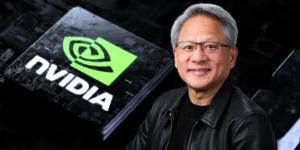Quantum computing is poised to redefine the foundations of computation as we currently understand them. As classical computers reach the limits of Moore’s Law and transistor miniaturization, quantum computing emerges as a revolutionary alternative, promising unparalleled processing power and efficiency. This article provides a comprehensive examination of quantum computing hardware, delving into its fundamental principles, core components, current developments, notable applications, and the challenges that must be overcome to realize its full potential.
Understanding Quantum Computing Hardware
Quantum computing represents a fundamental shift from classical computing, utilizing the principles of quantum mechanics to perform computations in ways that traditional CPUs cannot. At the heart of this technology lies the quantum bit, or qubit, which is the basic unit of information in a quantum computer.
Unlike classical bits that exist in a state of 0 or 1, qubits can exist in multiple states simultaneously due to a property known as superposition. Additionally, qubits can be entangled with one another, a phenomenon that links their states even across distances, allowing for highly complex calculations to be performed in parallel. These two key principles enable quantum computers to handle specific problems exponentially faster than classical systems.
Core Components of Quantum CPUs
The architecture of quantum computing hardware differs drastically from that of traditional CPUs. Instead of silicon-based transistor arrays, quantum processors rely on highly specialized physical systems to represent and manipulate qubits.
Qubit Implementation Technologies
Several physical platforms are used to implement qubits, each with its advantages and limitations. Superconducting qubits, such as those used by IBM and Google, are created using tiny circuits that operate at temperatures near absolute zero. These qubits can perform rapid quantum operations and are among the most advanced in terms of scalability and error correction.
Trapped-ion qubits, employed by companies like IonQ, utilize electromagnetic fields to trap and manipulate charged atoms. These qubits offer high fidelity and long coherence times, making them well-suited for precise computations. Other platforms include topological qubits, quantum dots, and photonic systems, each of which is being explored for its potential to overcome existing technical challenges in quantum hardware.
Cryogenic and Control Infrastructure
To maintain quantum coherence and minimize errors, most quantum processors must operate at ultra-low temperatures, requiring cryogenic refrigeration systems. These systems cool the quantum chip to millikelvin levels just fractions of a degree above absolute zero to stabilize the qubits and suppress thermal noise.
Quantum control electronics are essential for initializing, manipulating, and reading the state of qubits. These systems generate microwave pulses, lasers, or electromagnetic fields, depending on the qubit technology, ensuring precise control over quantum operations. The complexity and sensitivity of this infrastructure present significant engineering challenges in scaling up quantum computers.
Current Innovations and Milestones
In recent years, quantum computing hardware has advanced from experimental setups to functional systems capable of solving specialized problems. These developments mark critical milestones on the path toward practical quantum computing.
Quantum Supremacy Demonstrations
In 2019, Google announced a significant breakthrough by achieving quantum supremacy, demonstrating that a quantum computer could perform a specific task faster than the most powerful classical supercomputers. Their 53-qubit quantum processor, named Sycamore, completed a computation in 200 seconds that would have taken a classical supercomputer thousands of years to complete.
Although the task was highly specialized and of limited practical utility, the demonstration proved that quantum hardware could outperform classical machines in specific domains, thereby validating decades of theoretical research.
Modular and Scalable Architectures
As researchers work to increase the number of qubits in a processor, scalability remains a primary goal. Companies are developing modular quantum architectures, where more minor quantum chips are interconnected through quantum links or photonic channels. This approach enables the construction of larger, more powerful systems without compromising coherence or increasing error rates beyond manageable levels.
Hybrid quantum-classical systems are also gaining traction. In these configurations, quantum processors work in tandem with classical CPUs and GPUs, leveraging the strengths of each architecture to solve complex problems more efficiently.
Notable Applications of Quantum Hardware
Quantum computing hardware is not designed to replace classical computers in everyday tasks. Instead, it is intended to address specific problems that are currently intractable for traditional systems.
Drug Discovery and Molecular Simulation
Quantum processors can simulate the behavior of molecules and chemical reactions at the quantum level, a capability that classical computers struggle to achieve accurately. This capability could revolutionize drug discovery by identifying promising compounds more quickly and efficiently, reducing development costs and accelerating breakthroughs in medicine.
Cryptography and Cybersecurity
Quantum computers are expected to challenge current encryption standards. Algorithms such as Shor’s algorithm can factor large numbers exponentially faster than classical methods, posing a threat to traditional RSA-based encryption. However, quantum hardware also opens the door to quantum-safe encryption techniques and secure quantum communication protocols such as quantum key distribution.
Optimization and Artificial Intelligence
Complex optimization problems such as logistics planning, supply chain management, and training machine learning models can benefit from quantum hardware. Quantum annealers and gate-based quantum processors are being explored to find faster and more efficient solutions to these real-world challenges, which often involve large datasets and multidimensional variables.
Challenges in Quantum Computing Hardware
Despite impressive progress, the development of practical and reliable quantum computing hardware faces numerous technical and theoretical challenges that must be overcome.
Qubit Stability and Error Correction
One of the most significant challenges is maintaining qubit coherence long enough to perform practical computations. Quantum states are highly fragile and susceptible to decoherence from environmental noise and imperfect control. Developing robust error correction methods that can detect and correct these errors without collapsing the quantum state is a critical area of research.
Hardware Scalability and Integration
Building quantum processors with thousands or millions of qubits requires scalable and reproducible fabrication techniques. As the number of qubits increases, so does the complexity of wiring, control electronics, and cryogenic support. Creating integrated systems that can manage this complexity without introducing additional noise or instability is a formidable engineering challenge.
Accessibility and Standardization
Quantum hardware is still primarily confined to research labs and cloud-based services. Making quantum computing more accessible to developers, educators, and industry professionals will require standardized programming environments, hardware interoperability, and educational resources. Initiatives such as Qiskit, Cirq, and cloud-based quantum platforms are steps toward broader engagement and innovation.
Future Outlook for Quantum CPUs
The future of quantum computing hardware is both promising and uncertain. While many technical barriers remain, the pace of innovation and the growing investment from governments, universities, and private companies suggest that significant progress is on the horizon.
Efforts to develop fault-tolerant quantum computers capable of running long, complex algorithms without significant error are ongoing. Emerging technologies, such as neutral atom qubits and topological qubits, may offer new pathways to scalability and stability. In parallel, quantum networking and distributed quantum computing are being explored as potential avenues for building quantum systems that extend beyond single devices.
As these developments mature, quantum CPUs may eventually complement classical computing architectures in high-performance environments, solving problems once thought impossible and opening new frontiers in science, technology, and society.
Conclusion
Quantum computing hardware represents a monumental leap in the evolution of computational technology. By harnessing the strange and powerful properties of quantum mechanics, these systems offer transformative potential for fields ranging from medicine to cryptography and artificial intelligence. Though many hurdles remain, ongoing advances in qubit technologies, control systems, and scalable architectures are paving the way for the quantum era. As research continues to unlock the capabilities of this emerging hardware, quantum CPUs are set to become a cornerstone of the next generation of high-performance computing.









